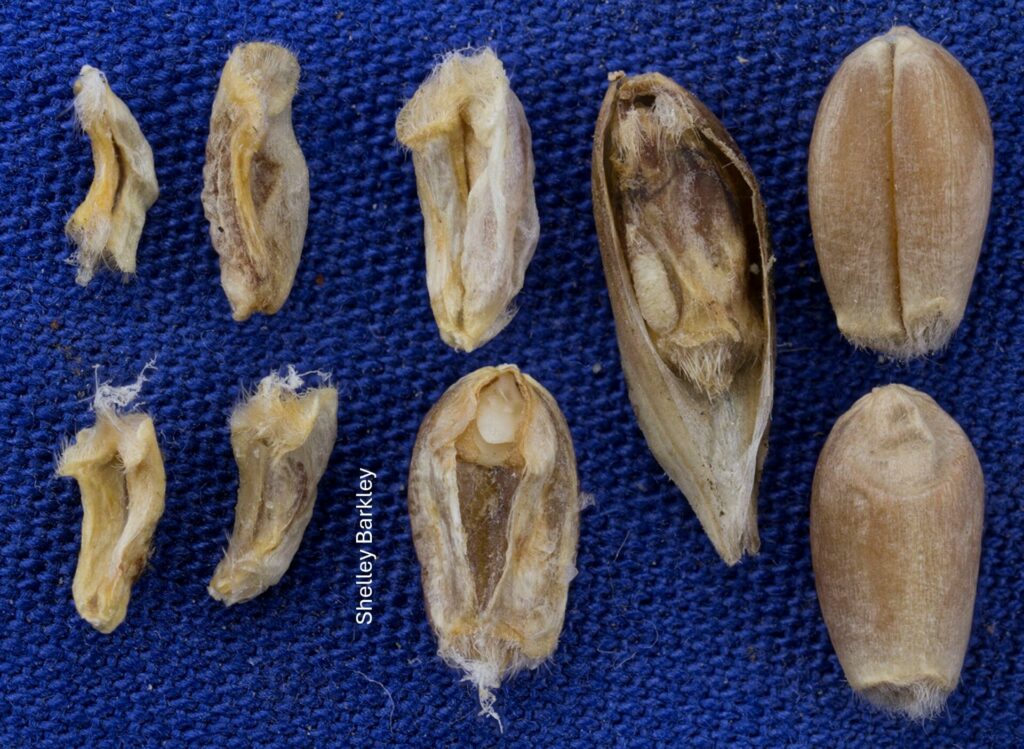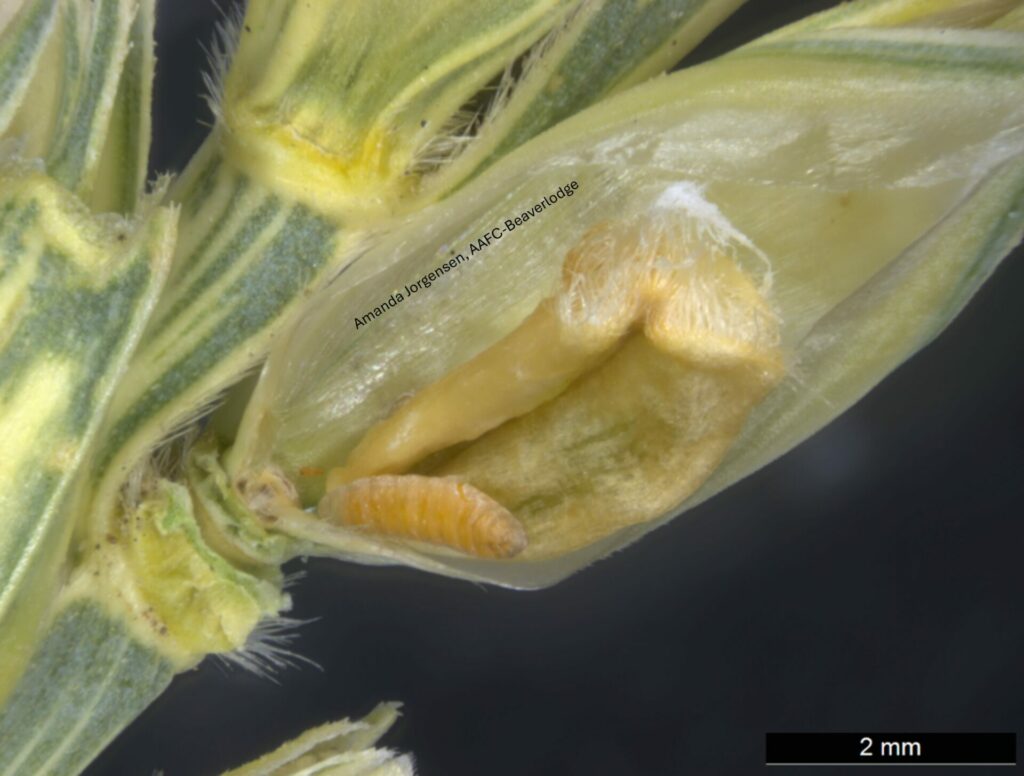Wheat midge, Sitodiplosis mosellana, is an important pest of spring wheat, winter wheat, durum wheat and triticale. Spring rye can also experience some damage from wheat midge. Adult wheat midge do not damage their host plant, but do lay eggs that give rise to the damaging larval stage.

Wheat midge larvae feed on the outside of wheat kernels. Larval feeding results in shrunken, shriveled, and/or cracked kernels. Larval feeding can also cause kernel development to be aborted.

Feeding damage caused by larval wheat midge reduces grain yield and the quality of the harvested grains. Grains with wheat midge damage are typically downgraded at the grain elevator.
Wheat midge damage to the kernels is not easy to detect and can go unnoticed. Therefore, scouting for adult wheat midge is necessary to determine if foliar insecticides may be needed to prevent female wheat midge from laying eggs. Scout for adults in the evenings, daily during the susceptible plant stage. Calm evenings are best for scouting. Count the adults on 4-5 wheat heads at 5 locations in the crop to estimate midge per wheat head. Economic thresholds are:
- >1 wheat midge per 4-5 wheat heads (to prevent yield loss)
- >1 wheat midge per 8-10 wheat heads (to prevent grade reduction)
For more information about wheat midge, please visit the Prairie Pest Monitoring Network’s Risk Maps page to see annual wheat midge survey results, and previous Insect of the Week posts about wheat midge and its parasitoid, Macroglenes penetrans. Alberta Agriculture and Irrigation, Saskatchewan Ministry of Agriculture, and Manitoba Agriculture also have great wheat midge information resources and you can find information about wheat midge in Field Crop and Forage Pests and their Natural Enemies in Western Canada (also available in French).
